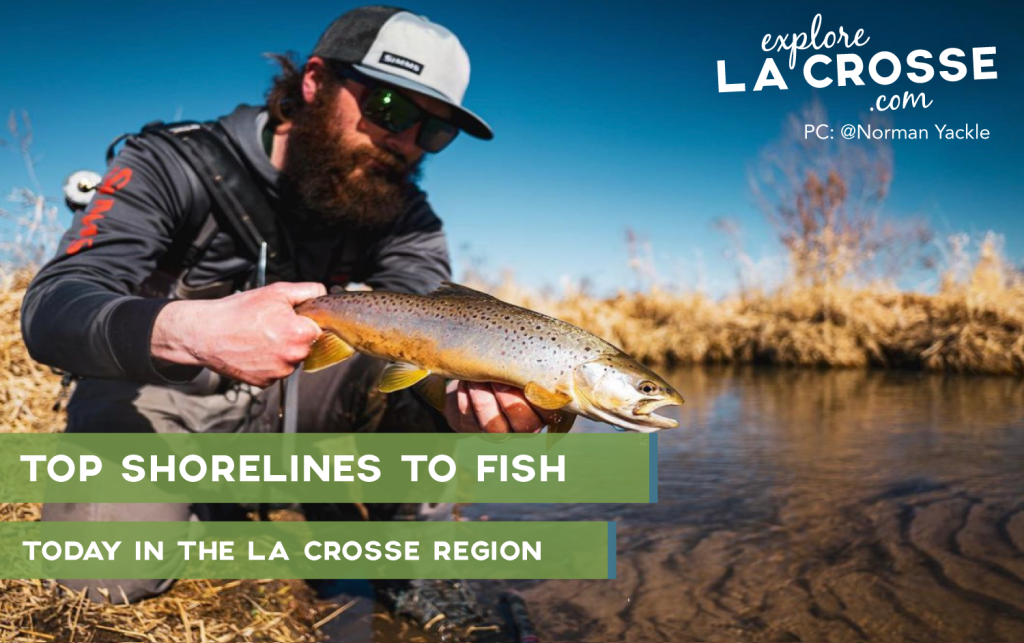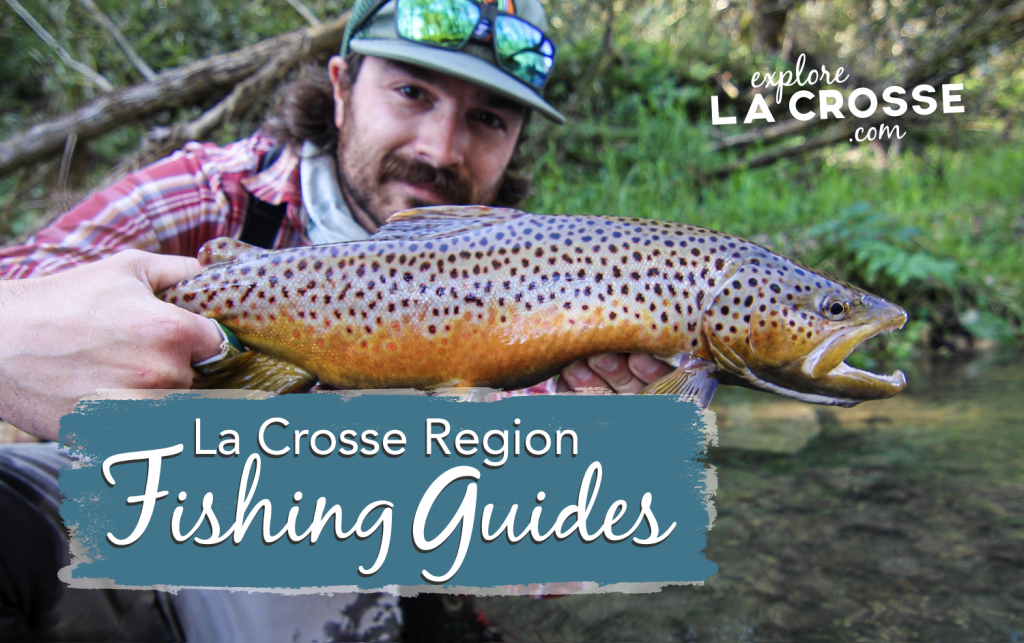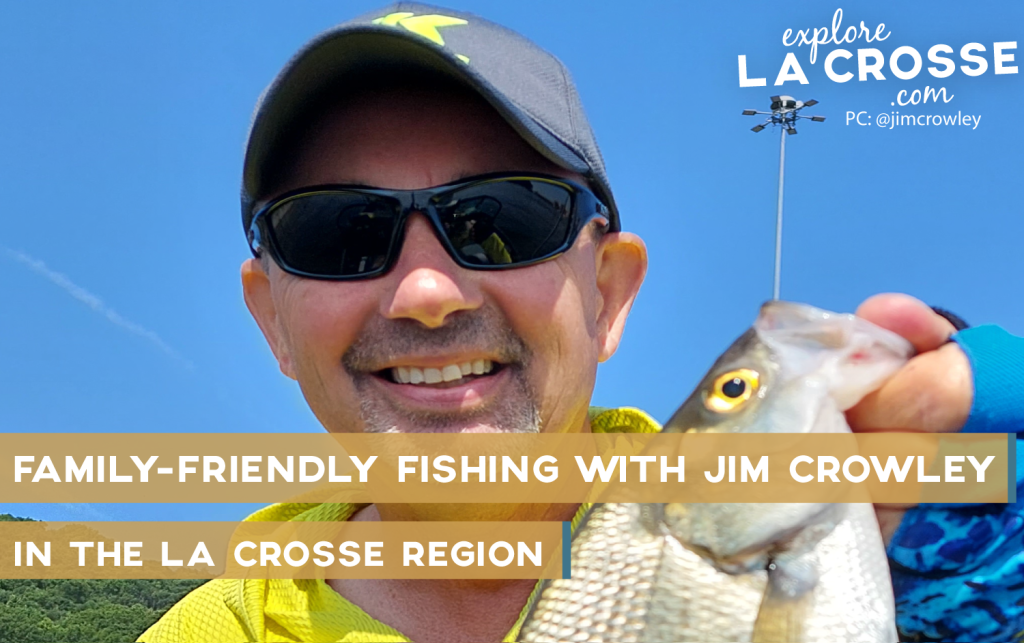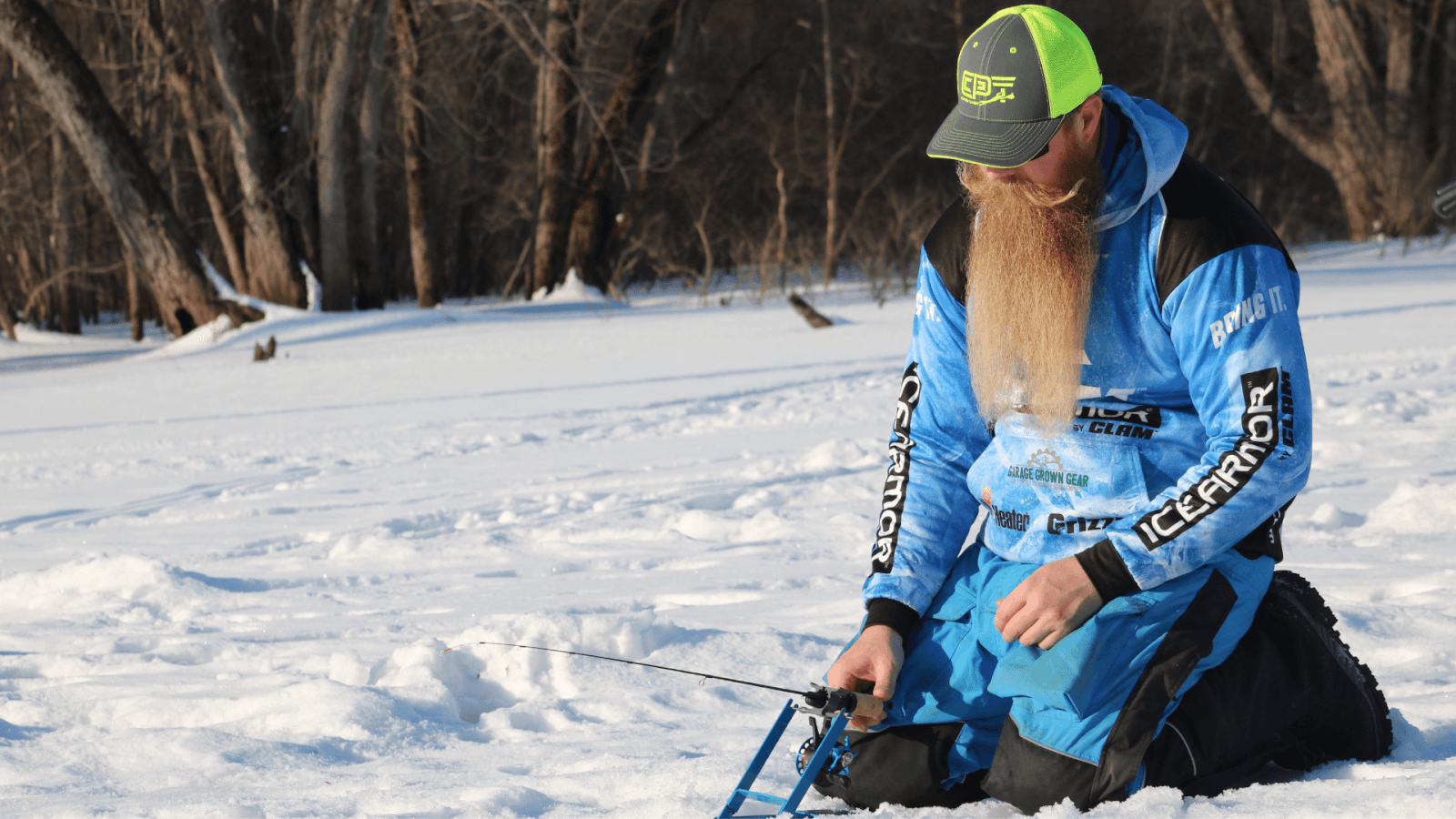
Fishing in the La Crosse Region
Fishing
Near La Crosse, the Upper Mississippi sprawls well beyond its main channel, creating hundreds of tiny islands, channels, and deep pools which harbor more species of fish than any other temperate-climate river in the world. Walleye is king in these waters, but you can catch just about anything here: sauger, northern pike, shovelhead sturgeon, large and smallmouth bass, perch, sunfish, bluegill, crappie, gar, channel and blue catfish, to name a few. (Here’s a great article about catfish in the area.)
The La Crosse and Black Rivers, which join the Mississippi in the area, are home to many of the same species. A few miles north of La Crosse, the Mississippi opens into the 8,000+ acre Lake Onalaska, which features seven boat landings and is chock-full of panfish, northern, and bass, and the area also offers myriad cold-water streams rife with brown, rainbow, and brook trout. Another popular lake fishery is Lake Neshonoc located in West Salem. It has a maximum depth of 11 feet. Visitors have access to the lake from public boat landings, a public beach. Fish include Panfish, Largemouth Bass, Northern Pike and Catfish. Check out the DNR’s Trout Stream Map for La Crosse County.
Spring & Summer Fishing
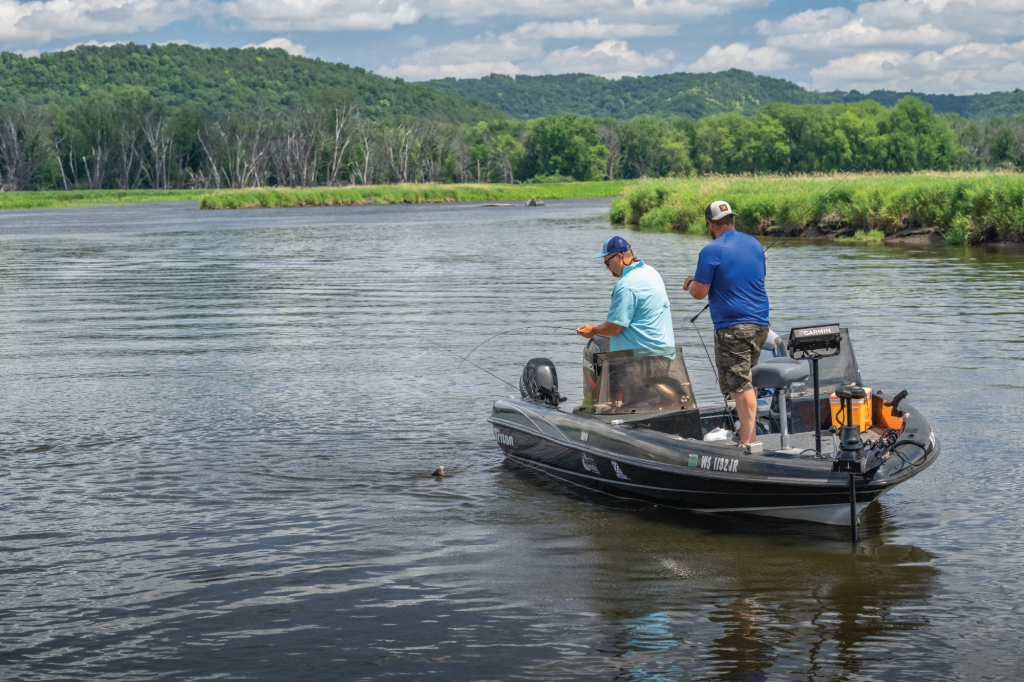

Spring is a time when many anglers in La Crosse County turn their eyes to walleye. Shortly after the ice leaves the river, walleye are running, and the catching can be spectacular. On the Mississippi, many anglers head to the dams where large numbers of walleye congregate. However, there’s often great fishing downriver as well. As waters warm in the spring, panfish action starts picking up, particularly in the flats and backwaters of the Black River, Mississippi River, and Lake Onalaska that tend to warm faster than the moving waters near the river’s channel. The warming waters also make northern pike fishing pick up.
Late spring, early summer can be an excellent time to catch nearly every species of fish, but bass fishing really stands out. Both largemouth and smallmouth can be found in the river system around La Crosse. Look for smallmouth in the main river channels in spots that protect them from the heavy current, such as rocks, downfalls, and wingdams. Largemouth bass is plentiful in the shallow backwaters. Fishing for catfish during the warmest months of the year can be an exciting affair, with both channel cats and flatheads providing some of the best catfishing in the Midwest.
Fall & Winter Fishing
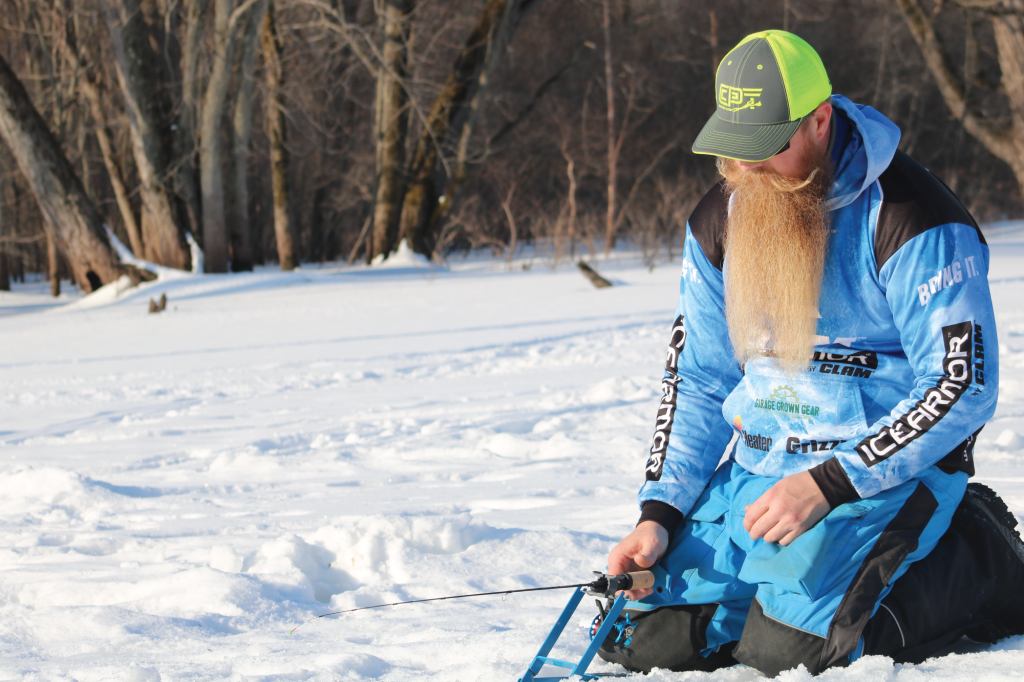
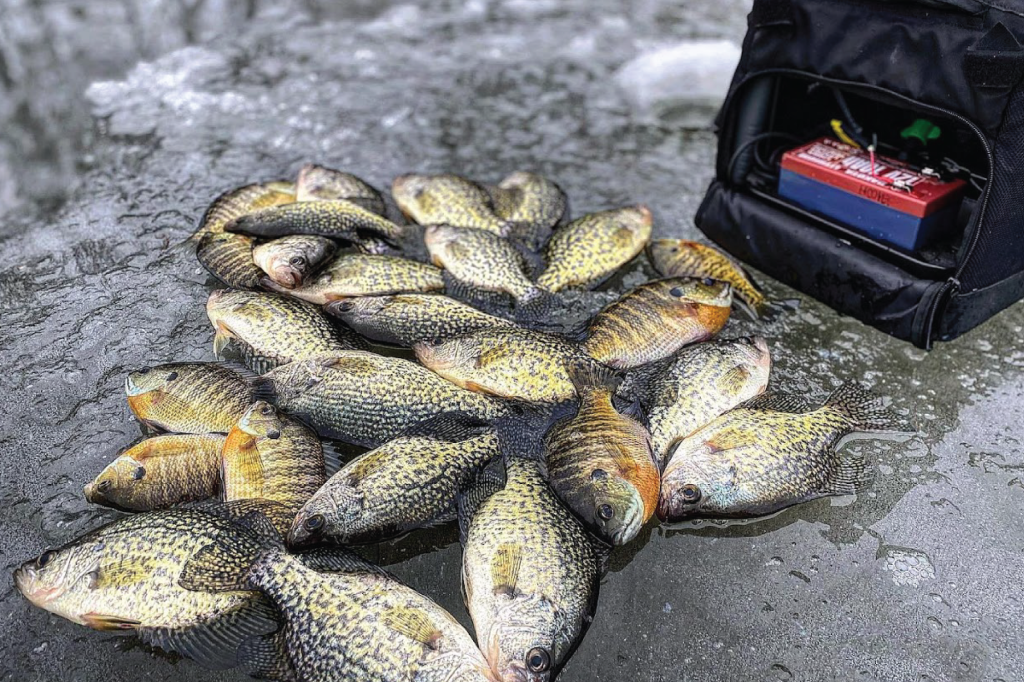
The cooling temperatures of fall bring wonderful color to the woodlands and bluffs. Fall also brings some of the year’s best fishing. Fish are aggressive as they heavily feed in preparation for the cold winter months ahead. Cooler water temperatures congregate the fish and dissipate recreational boat traffic, leaving more water for you to enjoy without dealing with the crowds. Walleye begin to move again in the fall, and while the fall walleye run tends to be less lively than in the spring, the fall run tends to be more predictable and can provide steady action right up until the lakes, pools, and waterways freeze over. The first areas to catch the attention of ice anglers are the area’s many backwaters. As ice creeps out from the shores of Lake Onalaska, so do intrepid ice anglers looking for some of the best panfishing of the year. As ice covers a wider area, ice anglers begin moving further out to deeper water in search of walleye, yellow perch, and northern pike.
Explore Fishing in the La Crosse Region
The area features several boat landings, marinas, and beaches, as well as fishing floats and piers, guides, and numerous outfitters. The Upper Mississippi US Fish & Wildlife Refuge has put together some fantastic maps of Pools 7 and 8 of the Mississippi River, with boat landings, walk-in access points and more. You can find information regarding licensing, rules, and regulations at Wisconsin fishing regulations at the Department of Natural Resources website.
Share Your Next Adventure
Uncover the hidden gems of La Crosse, Wisconsin — from the majestic views atop Grandad Bluff to the vibrant riverfront along the Mississippi.

